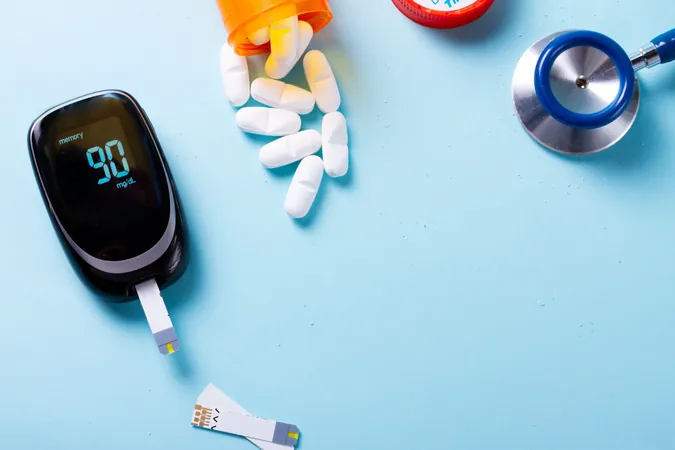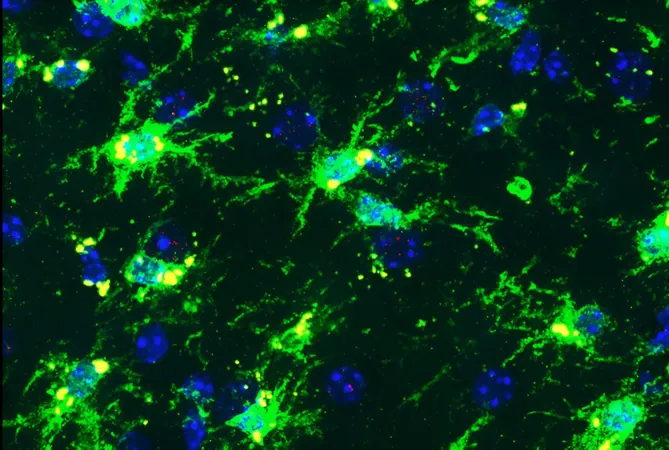
Study Reveals Groundbreaking Kidney Protection from SGLT-2 Inhibitors for Diabetics!
2024-10-01
Introduction
Recent research has shed light on the astonishing protective capabilities of sodium-glucose cotransporter-2 (SGLT-2) inhibitors for kidney health in patients with type 2 diabetes (T2D). This real-world, long-term study confirms that these medications provide significant benefits, regardless of a patient's initial kidney function and blood sugar levels.
Impact of Diabetes on Kidney Health
It’s no secret that diabetes is a leading culprit behind chronic kidney disease, with alarming statistics from the National Institute of Health stating that 1 in 3 diabetics were facing kidney disease as of 2019. Damaged kidneys struggle to filter toxins from the blood, leading to life-threatening waste accumulation in the body. Additionally, elevated blood glucose levels compound this issue by harming the kidney's blood vessels, with high blood pressure further exacerbating the damage.
Importance of Early Detection and Intervention
Detection and early intervention are key, as most individuals with initial kidney damage exhibit no symptoms. Regular urine tests can be pivotal in identifying these changes early on. Effective management strategies include tighter control over blood sugar and blood pressure, alongside medications such as angiotensin-converting enzyme inhibitors or angiotensin receptor blockers.
SGLT-2 Inhibitors: A Game-Changer
SGLT-2 inhibitors are a game-changing class of pharmaceutical agents that not only help in reducing blood sugar but also protect kidney function by blocking glucose reabsorption, resulting in increased sugar excretion through urine. This study focused on a sample of 4,734 patients who were prescribed SGLT-2 inhibitors (including canagliflozin, empagliflozin, and dapagliflozin) as part of their treatment regimen between January 2020 and June 2021 at a comprehensive care center in Beijing, China.
Study Design and Demographics
The researchers conducted an in-depth analysis of the estimated glomerular filtration rate (eGFR) over an 18-month period following the initiation of the SGLT-2 treatment. Out of the original participant pool, 998 met the stringent criteria for inclusion, with a demographic consisting of 65.7% males and an average age of 60.09 years. Each participant had a confirmed T2D diagnosis and faced various complications, such as diabetic peripheral neuropathy, nephropathy, and retinopathy.
Findings and Compliance Rates
Results revealed a fascinating trend: while eGFR dipped post-treatment, it steadily improved, returning to baseline levels by the 12-month mark, with no significant statistical differences noted thereafter. Notably, the compliance rate for controlling HbA1c peaked at 53% within the first year of treatment. Interestingly, patients with a baseline HbA1c of less than 7% showed even higher compliance rates, maintaining around 75% throughout the follow-up.
Conclusion
In summary, these compelling findings affirm the protective role of SGLT-2 inhibitors in preserving kidney function among T2D patients. As the medical community delves deeper into the implications of this research, it becomes increasingly clear that these medications are a crucial ally in the fight against diabetic kidney disease. The study’s authors underscore the importance of these results, paving the way for enhanced treatment protocols and ultimately better patient outcomes.
What's Next?
With the persistent rise in diabetes rates globally, the demand for effective treatments like SGLT-2 inhibitors is more urgent than ever. Stay tuned as we uncover more on this groundbreaking research and its potential impact on diabetes management moving forward!






 Brasil (PT)
Brasil (PT)
 Canada (EN)
Canada (EN)
 Chile (ES)
Chile (ES)
 España (ES)
España (ES)
 France (FR)
France (FR)
 Hong Kong (EN)
Hong Kong (EN)
 Italia (IT)
Italia (IT)
 日本 (JA)
日本 (JA)
 Magyarország (HU)
Magyarország (HU)
 Norge (NO)
Norge (NO)
 Polska (PL)
Polska (PL)
 Schweiz (DE)
Schweiz (DE)
 Singapore (EN)
Singapore (EN)
 Sverige (SV)
Sverige (SV)
 Suomi (FI)
Suomi (FI)
 Türkiye (TR)
Türkiye (TR)